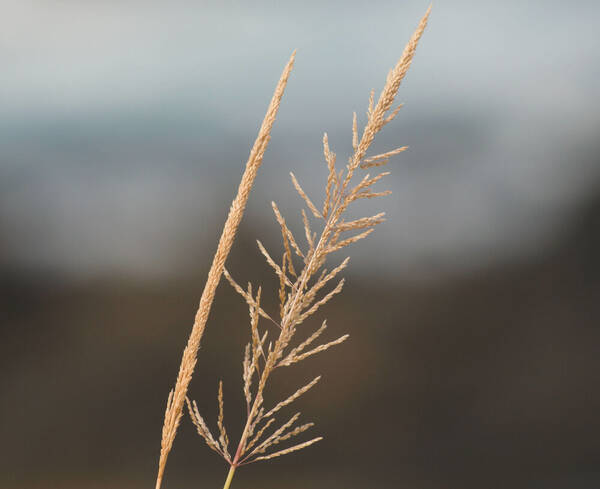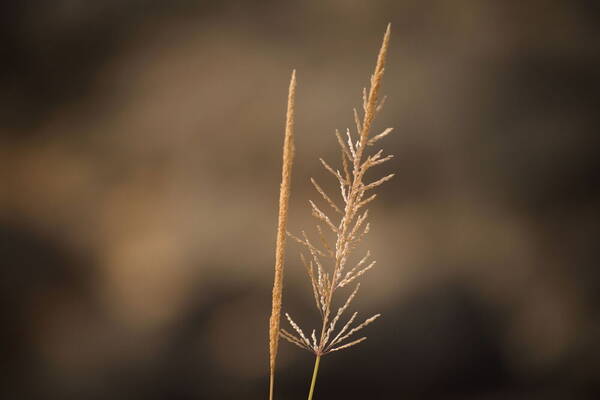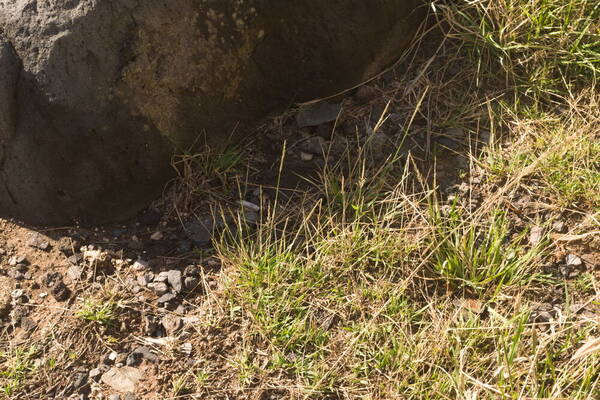Info
Subfamily: Chloridoideae
Genus etymology: Sporobolus = "seed thrower" referring to the seed being ejected from the pericarp
Species etymology: pyramidatus = "like a pyramid" [Latin] refering to the inflorescence shape
Photosynthetic type: C4 (warm season)
Nativity: naturalized - accidental
First recorded in Hawaiʻi: 1967
Map


Inflorescence










Plant







Habit



Spikelets

Collar

Description
Plants annual, or short-lived perennials flowering in the first year; cespitose, not rhizomatous. Culms 7-35(60) cm, erect or decumbent. Sheaths rounded below, margins and apices hairy, hairs to 3 mm; ligules 0.3-1 mm; blades 2-12(20) cm long, 2-6 mm wide, flat, abaxial surface glabrous, adaxial surface scabridulous, sometimes sparsely hispid, margins ciliate-pectinate. Panicles 4-15(18) cm long, 0.3-6 cm wide, open (contracted when immature), pyramidal; lower nodes with 7-12(15) branches; primary branches 0.5-4.5 cm, spreading 30-90° from the rachis, with elongated glands, without spikelets on the lower 1/3 – 1/2, secondary branches appressed; pedicels 0.1-0.5 mm, appressed. Spikelets 1.2-1.8 mm, plumbeous or brownish, often secund along the branch. Glumes unequal, ovate to obovate, membranous; lower glumes 0.3-0.7 mm, without midveins; upper glumes 1.2-1.8 mm, at least 2/3 as long as the florets, often longer; lemmas 1.2-1.7 mm, ovate to elliptic, membranous, glabrous, acute; paleas 1.1-1.6 mm, ovate to elliptic, membranous, glabrous; anthers 0.2-0.4 mm, yellowish or purplish. Fruits 0.6-1 mm, obovoid, faintly striate, light brownish. 2n = 24, 36, 54.
(Description source: Barkworth, M.E., Capels, K.M., Long, S. & Piep, M.B. (eds.) 2003. Flora of North America, north of Mexico. Volume 25. Magnoliophyta: Commelinidae (in part): Poaceae, Part 2. Oxford University Press, New York. 783 pp. http://floranorthamerica.org/Sporobolus_pyramidatus )
Habit Perennial; short-lived; caespitose. Culms geniculately ascending; 15-60 cm long; 1-1.5 mm diam. Culm-internodes distally glabrous. Leaves mostly basal. Leaf-sheaths glabrous on surface; outer margin hairy. Ligule a fringe of hairs; 0.5-0.8 mm long. Leaf-blades 4-19 cm long; 2-4 mm wide. Leaf-blade margins scabrous; tuberculate-ciliate; hairy at base. Inflorescences Inflorescence a panicle. Panicle open, or contracted; linear (before anthesis), or pyramidal; 3-13 cm long. Primary panicle branches appressed, or spreading; whorled at most nodes. Spikelets appressed; solitary. Fertile spikelets pedicelled. Spikelets Spikelets comprising 1 fertile florets; without rhachilla extension. Spikelets lanceolate; subterete; 1.2-2 mm long; breaking up at maturity; disarticulating below each fertile floret. Fertile Spikelets comprising 1 fertile florets; without rhachilla extension. Spikelets lanceolate; subterete; 1.2-2 mm long; breaking up at maturity; disarticulating below each fertile floret. Glume Glumes deciduous; reaching apex of florets. Lower glume linear; 0.6-0.7 mm long; 0.33-0.5 length of upper glume; membranous; without keels; 1 -veined. Lower glume lateral veins absent. Lower glume apex acuminate. Upper glume lanceolate; 1.2-2 mm long; 1 length of adjacent fertile lemma; membranous; grey; without keels; 1 -veined. Upper glume lateral veins absent. Upper glume apex acute. Florets Fertile lemma lanceolate; 1.2-2 mm long; membranous; grey; without keel; 1 -veined. Lemma apex acute. Palea readily splitting down midline; 1 length of lemma; 2 -veined. Palea keels approximate. Flowers Anthers 3, or 2; 1.2 mm long. Fruits Caryopsis with free soft pericarp; ovoid; 1.1-1.2 mm long. Distribution Pacific: north-central. North America: northwest USA, north-central USA, southwest USA, south-central USA, southeast USA, and Mexico. South America: Mesoamericana, Caribbean, northern South America, western South America, Brazil, and southern South America.
(Description source: Clayton, W.D., Vorontsova, M.S., Harman, K.T. and Williamson, H. (2006 onwards). GrassBase - The Online World Grass Flora. Available at https://powo.science.kew.org )